While the historic centre of Bologna is known for its world-famous Unesco heritage porticoes and its surrounding hillside charm, less is spoken about its countryside to the north-east and -west.
The undulating topography of Bologna’s section of the apennine mountain range to the south usually takes all the glory, but the flatlands, known as ‘la pianura’, make for a gentle, family-friendly cycle route with many points of interest along the way.
Bologna’s strip of the ciclovia del sole route spans 50km of undemanding cycle paths, ideal for all levels of cyclists – or just when you fancy watching the world go past with little pedalling effort on your part.
And there’s even more to explore if you’re feeling extra adventurous, as the wider stretch covers Verona-Bologna-Florence.
I stuck to the section constructed on the embankment of the old Bologna-Verona railway, which can easily be done in a day or a weekend, depending on how much you stop to sightsee or go off-route to explore further little towns of the lowlands.
READ ALSO: Ten awe-inspiring routes for cycling through Italy
Little, quaint abandoned railway stations greet you every so often and there are cycle stations set up for you to have a break and pump your tyres.
The route crosses a smattering of historic centres, smaller towns that can often be missed. But although they’re modest in size, they are a treasure trove of artworks, exquisite cuisine and living proof of how these areas are rebuilding after a devastating earthquake in the area ten years ago.
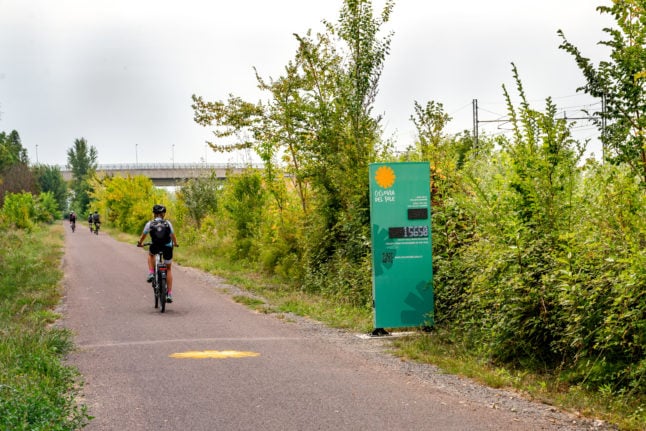
My first stop for a wander away from the cycle path was the town of Crevalcore. It makes up one of the many municipalities that look like mini Bolognas thanks to its Roman street planning and porticoes in terracotta hues.
In fact, once you enter the centre, you step through a Bologna gate (porta) which extends down to the Modena gate, reflecting its position between the two provinces.
The town is a meeting of both cities and heritage – especially when it comes to the cuisine, which displays influences of the two.
The streets hold stories of a different world, when the town in medieval times became its own entity, with a distinct language and currency, Linda Cavicchi from Sustenia, and who collaborates with tourist board, Bologna Welcome, told us.
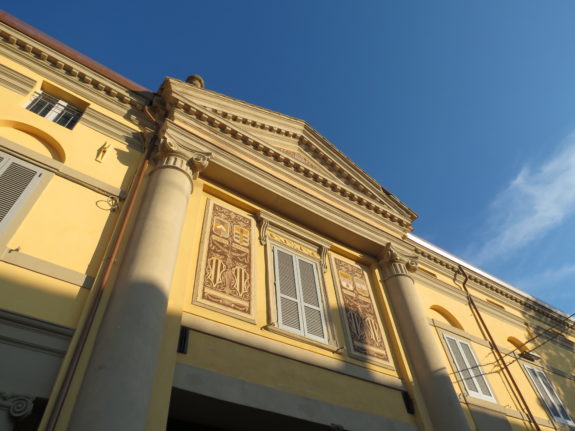
Some of the town’s highlights, like many places in the Bologna province and Emilia Romagna beyond, are still rebuilding from the earthquake in May, 2012.
Scaffolding greets you on many corners, while other buildings look freshly painted, signalling the area’s rebirth and strength.
READ ALSO: 15 insider tips to make living in Bologna even better
Crevalcore also alleges to have the world’s smallest museum, proudly staking claim to the title with a plaque outside.
The Leo Preti puppet museum is, indeed, tiny. You walk in and it immediately stops. This miniscule room of a few square metres houses puppet townsfolk, witches, devils and animals by the puppeteer Leo Preti, who came from the area, along with the various backdrops to make the stories come alive.

Depending on your perspective, you may think these are mini masterpieces or simply creepy by today’s standards.
Either way, there’s no denying the precise craftsmanship and its impressive preservation, giving you a glimpse of life and entertainment in times gone by.
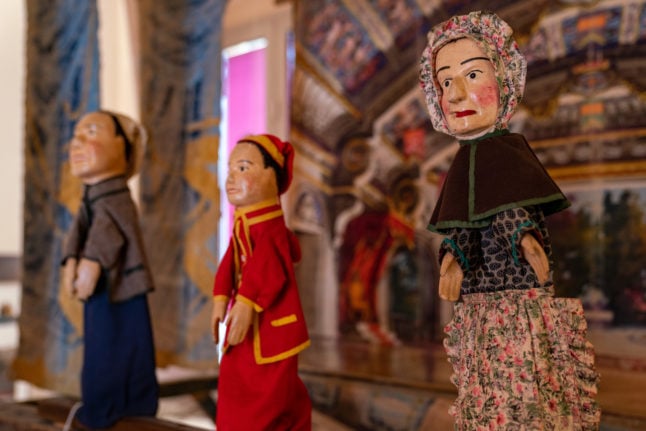
Keeping off the cycle path for a little longer, it’s worth a detour to Villa Ronchi just outside Crevalcore centre to see an astonishing amount of frescoes in the middle of the flatlands.
Its fairly remote location means it often goes unnoticed, even by Crevalcore’s inhabitants, the owner Mauro Caselli told us.
He claims the villa has the most fresco paintings in Emilia Romagna, which restoration works confirmed were created by Bologna-born 16th century Italian painter Agostino Carracci.

As abundant as they are intricate, they are hidden from public view while this villa, too, still undergoes renovations, ten years after the earthquake.
“It was devastating. The morning after the earthquake we came to the villa and saw the damage. I fell to my knees and cried,” Mauro said.
Once splendid, the 16th-century manor house inside is currently inaccessible, for now, waiting to show off its Baroque artwork and chandeliers made from Murano glass. Mauro expects to re-open the doors to its hidden art and history within around a year.

In the meantime, the spirited host never gave up on his clearly beloved livelihood, hosting re-enactments and weddings in the villa’s surrounding parkland.
The theme of rebuilding and looking forward to a new chapter runs throughout the lowlands of Bologna’s province.
Not only are historic buildings and artworks being returned to their former glory, but so too is nature, with a drive on restoring diversity that has been lost due to the area’s heavy farming and construction industries.
Within the vicinity of the villa is an oasis built on the former tanks of a sugar factory – an industry inherent to the region.
It’s now an ecological rebalancing area, where you can observe various species of birds, including a pair of storks who chose to make this their home, creating a nest on an old telephone pole and producing young every year.
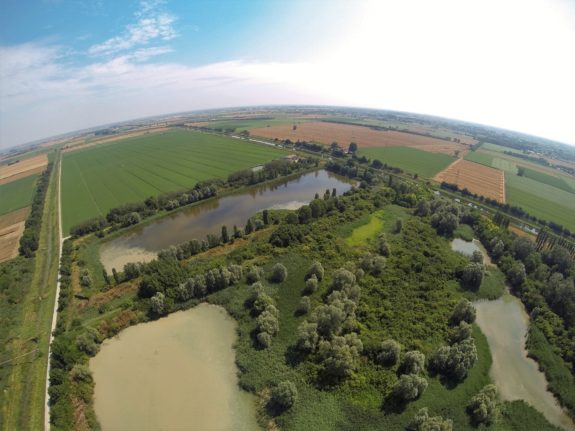
Themes of rebalancing nature and working in harmony with the environment has trickled down to businesses across the flatlands.
Valle Torretta is boldly stepping away from Bologna’s beloved meat-loving scene and has opened a vegan cafe to complement its agriturismo farm stay. Growing its own produce and showing others how to do the same is all part of the company’s drive to reduce our environmental impact.
The owner, Steven Uthayakumar, admits it’s a hard sell when I asked him how people from Bologna, the home of tortellini and mortadella, reacted to such a meat- and dairy-free menu.
READ ALSO: Ask an expert: What’s the difference between Italian tortellini and tortelloni?
But he is noticing a change too and said that people from the city enjoy escaping for a taste of the wholesome, organic, sustainable life. And on sampling their homemade cherry crostata, a kind of pastry cake, you’d be hard-pressed to say that it contained vegan ingredients.
Continuing on my journey, I found more protected spots of nature along the cycle path. ‘La Bora’, a nature reserve just on the outskirts of San Giovanni in Persiceto has a programme to boost indigenous turtles, as they face being wiped out by their invasive American counterparts.
If you look in the waterways and lakes across much of Bologna’s province, you’ll see hundreds of American turtles that were released illegally into the wild and reproduced in striking numbers.

The reserve’s manager, Andrea Morisi, spoke with passion about doing more to expand the area’s biodiversity as so much of it has been lost to industry. In this particular curated wild spot, more species of plants and animals can thrive due to the young forest they began proliferating just 30 years ago – a blink of an eye in terms of forest age.
Although small, this piece of protected nature is a nod towards a hope of bringing back much-needed balance to the area.
Cycling into the centre of the town surprises you with artistic discoveries once again – bright and bold murals by local artist Gino Pellegrini can be seen in Betlemme Square.
Also called Piazzetta degli Inganni (the square of deceptions), the walls are covered in intricate details depicting local wildlife and flora in a work entitled Trompe l’oeil. Keep looking and you’ll find another creature, another story about the local environment, such as the mosquito, a sometimes unfortunate feature of the lowlands, or the great oak tree, as this species used to thrive here.

The artist certainly broadened his horizons, working in the US as a Hollywood set designer and collaborated on films such as Kubrick’s ‘2001: A Space Odyssey’ and – one of my all-time childhood favourites – Disney’s ‘Sword in the Stone’.
As this town is one of the oldest in the area, history awaits you on every corner, such as the municipal theatre that dates back to 1795. You can find it if you go into the town hall, which in itself traces back to the 15th century. It’s something of a shock to see such dramatic grandeur in the same building as where you’d go to get your codice fiscale.

Churches going back hundreds of years, some to the 14th century, are around every corner. Not only can you find art that would rival pieces found in the cities, some of these buildings have merged the past with innovation, such as the physics museum that’s housed within the San Francesco church and cloister.
So much touring calls for nourishment, however, and San Giovanni in Persiceto boasts some of the region’s richest and heartiest dishes. I caught my breath and refuelled at Osteria del Mirasole, where they’re famous for their signature dish, tortellini alla panna d’affioramento.

The recipe is said to be steeped in the area’s history, ancient crafts and authentic rural tradition. It’s also a tad controversial as the Bolognese always cook the meat-filled tortellini pasta in brodo – essentially, stock and meat juices.
To put tortellini in cream might be something the Bolognese do privately at home, but almost never in restaurants. However, this osteria proved that it’s worth making a rich pasta dish even more sumptuous with cream – and not just any cream. It’s made from milk drawn in the evening and left to rest until the morning, before being used to make the cheese Parmigiano Reggiano.
To hell with the calories, and the fact this is probably one of the most expensive bowls of pasta you’ll find in the region. It’s just the tonic for tired legs and educating your mind.
MORE TRAVEL:
- The very best of the Tuscan Maremma
- Picnicking Roman-style in the Castelli Romani
- Simple pleasures in Cilento, home of Italy’s Mediterranean diet
My last stop detoured away from the main cycle path, but the diminutive town of Pieve di Cento, home to around 7,000 inhabitants, is worth seeing. It’s all flat, so getting around these towns is relatively easy, after all.
Also reminiscent of Bologna for its long porticoes, this town’s moniker is, in fact, ‘little Bologna’.
Within its walls are centuries-old stories, with some buildings such as the parish church dating back to the 9th century.
| Banner ad |
Notable highlights are the Collegiata church of Santa Maria Maggiore, the oldest church in Pieve di Cento and built between 1702 and 1710. Inside are impressive artworks – clearly so much so that documentary filmmakers want to tell their story as filming was taking place when I looked inside.

Italian Baroque painter Guercino’s art can be seen here after the church underwent restoration from significant earthquake damage.
While wandering around this Bologna in miniature, other stops worth making are the Oratorio della Santissima Trinità with its superb frescoes, hidden to the back of an unassuming church, and the town’s art museum, located in a building that was once a school.

The Pinacoteca Civica features 17th century paintings made by Guercino as well as contemporary artists from the area in what is, once again, a hidden delight of surprising historic riches.
If you have more juice in the tank, you can continue on the cycle path. Or, in my case, it was time to put my feet up, leaving with an appetite for seeing more of the area another weekend.
To my shame, this is the place I call home and yet I had no idea so much was lurking around every corner. I had dismissed the vastness of the lowlands as an empty space between the headline-grabbing, tourist-enticing cities.
But, as is often the case with Italy, there is history and beauty to be found in all corners when you take a detour away from the crowds, especially when you have the freedom of two wheels and enough curiosity to look twice.

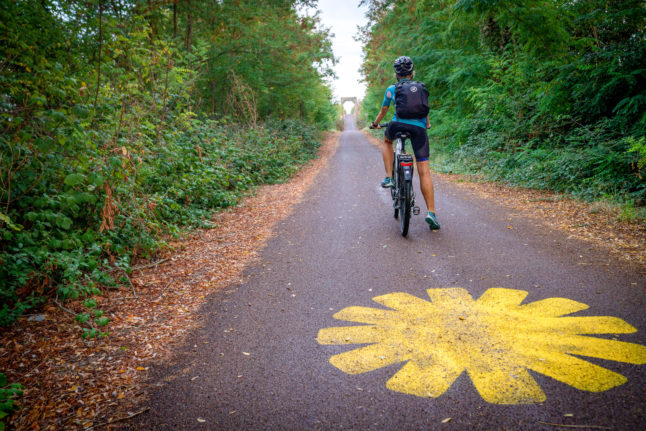
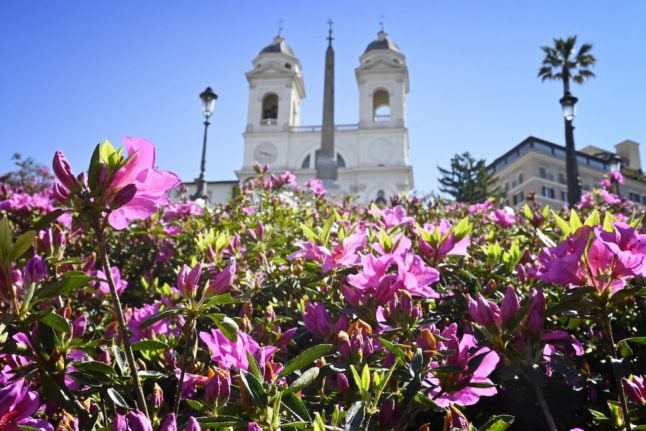

 Please whitelist us to continue reading.
Please whitelist us to continue reading.
Member comments